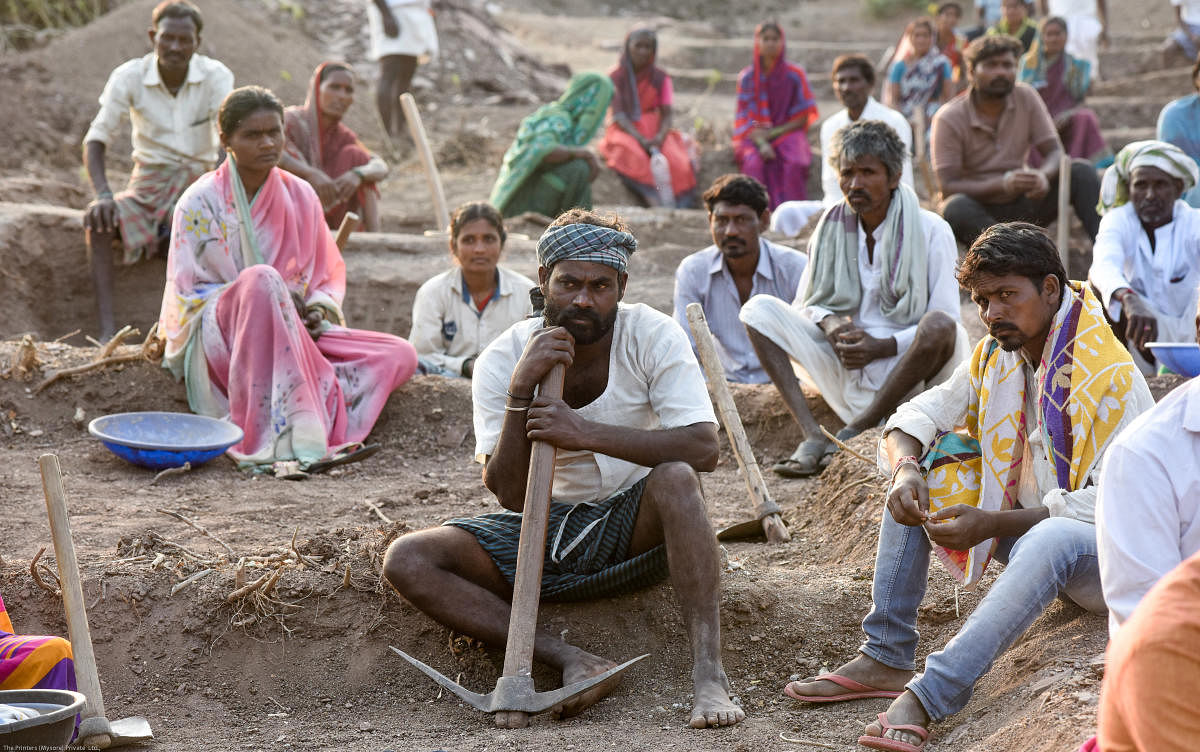
The announcement of the Agnipath scheme for military recruitment in June and its immediate launch have attracted considerable criticism and protests in many parts of India. The key features of the scheme are the opportunity to serve the nation as ‘Agniveers’ in the armed forces, a four-year tenure with the possibility of selection to a regular cadre in the armed forces for up to 25% of the ‘Agniveers’, and for the rest, an opportunity to apply for jobs in other uniformed cadres. I look at an alternative approach that was tried out in the early 1970s in the then Mysore State and argue that the experiment of ‘Bhusainiks’ may still be worth taking up in the light of our development experience of the last 50 years.
Bhusena and Bhusainiks
During 1971-73, I worked as Assistant Commissioner of Indi sub-division in Bijapur (now Vijayapura) district, which was severely affected by drought. In response, a large number of labour-intensive works like roads, tanks, soil-conservation bunds and irrigation wells were started under scarcity relief. We had hundreds of these relief works employing thousands of men and women who were dependent on daily wages to get some purchasing power in their hands to survive the drought.
Earlier in 1971, the then Government of Mysore set up the Directorate of Land Army at the initiative of the state’s Finance Minister Ramakrishna Hegde, who had visualised that it would be useful if rural labour could become an organised force of ‘Bhusainiks’, with some drill and discipline added. We started multiple Land Army-organised relief works in Indi sub-division. A few ex-servicemen who were in charge of the work sites trained local commanders from among the workers to take attendance and have a drill routine before work started in the morning.
It was a promising experiment while it lasted. There was good response from younger workers, perhaps because Bijapur district had a long history of its able-bodied men getting into the army. But clearly, the systems and support required to transform the scattered formations of ‘Bhusainiks’ into a cohesive ‘Bhusena’ was lacking. The government which came into office after the 1972 elections converted the Directorate into the Karnataka Land Army Corporation (KLAC) in 1974. In 2009, KLAC became Karnataka Rural Infrastructure Development Ltd. (KRIDL).
Employment Guarantee Scheme
From around 1969, there was intense political debate in India about the stance that government should adopt towards rural employment. As the state that had seen devastating droughts during 1970-73, Maharashtra took the lead in formulating the Employment Guarantee Scheme (EGS) under then Chief Minister V P Naik. However, the EGS did not get the imprimatur of the central government. Other states came up with their own variants. Karnataka launched its Employment Affirmation Scheme (EAS) in the late 1970s. This multiplicity of approaches and emphases went on for decades till the National Rural Employment Guarantee Act (NREGA) came into force in 2005.
NREGA was not merely a landmark legislation in independent India but soon became a popular, flagship programme of the UPA government despite many shortcomings in implementation and funding. However, post-2014, there is a perceptible lack of enthusiasm about the programme. But during the lockdowns following the pandemic, it became clear that the Mahatma Gandhi National Rural Employment Scheme (MGNREGS) is a good safety net offering a practical solution to the problem of livelihood to millions of workers. There is even a demand for an urban equivalent of NREGA now.
A frontal attack on the problem of unemployment has to be an important part of our strategy going forward. The focus cannot be only on job-creation in the organised sector and in technology companies. India needs a robust backstop that can provide succour to needy people through manual work. And if, during the period of such work, it is possible to train them to acquire some non-technical skills that can be quite useful in the armed forces later on, then it can be a win-win for everyone.
Agniveers and Bhusainiks
The controversy and criticism surrounding the Agnipath scheme stems from the fact that it was formulated to meet the needs of the armed forces but was sold as an employment and skill development initiative. This confused those who were for filling up vacancies in the armed forces and bringing down the average age of our soldiers, sailors and airmen. It also left the general public under the wrong impression that 75% of the recruits who would be culled under Agnipath every year would provide trained workers for the paramilitary forces besides supplying chefs, hair stylists, drivers and the like. This is why the employment-related angst of the youth has spilled over into the streets. The large number of applications filed under the Agnipath scheme point to the urgent need to deal with the difficult problem of rural unemployment in situ by making manual workers more disciplined, skilled-up and employable across the economy.
The way forward
Instead of indirectly thrusting the responsibility to train 75% of the ‘Agniveers’ for the general needs of the economy on the armed forces, they can be offered their pick from among able-bodied, young and disciplined workers from our MGNREGS sites, provided they are properly organised as per the original intent and promise of the Land Army in Karnataka. The MGNREGS portal reports over 152 million active workers, with the bulk of them being under the age of 30. It will be a challenge and an opportunity if even 10% of these are mobilised, skilled up and absorbed in the labour force of a growing economy. Agnipath cannot be a ‘Brahmastra’ to solve the problems of the armed forces and unemployed youth of the country simultaneously. Hence, we must invest time and resources to fashion alternative approaches and fresh thinking.
(The writer is a former IAS officer)